Trends and Insights to Innovate | article | Tuesday, March 14, 2023
THE ILLUSION OF AUTHENTICITY
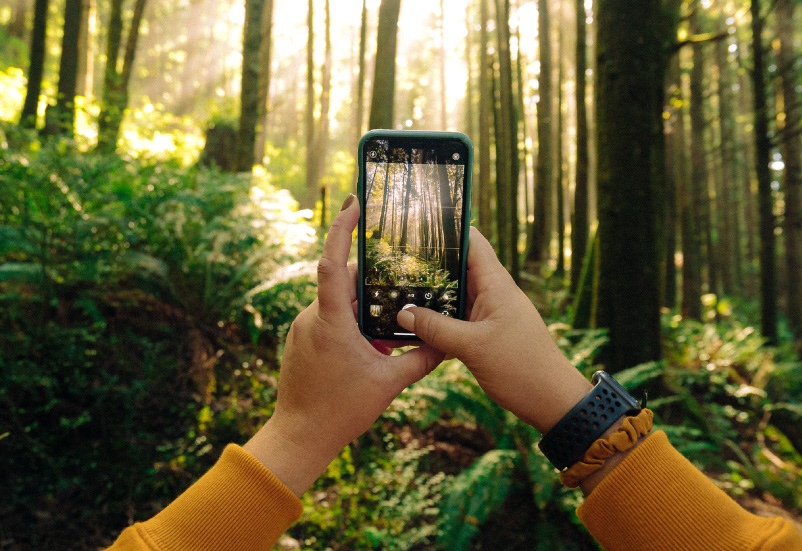
The distortion of reality and the manipulation of the truth cause a loss of references in all walks of life. The public sphere has become an arena without clear rules where everyone is in dispute and defends their interests with fierceness. The available connectivity and technological tools make it possible to create and expand impactful content with ease. Editing, altering, retouching, filtering, all these are everyday actions that mediate messages and images. What is true and what is not? What is real and what is fake? What is genuine and what has been modified? Those are questions we are asking ourselves all the time. We are living in a crisis of trust that hinders relationships and communication. People doubt the intentions of companies and institutions. Widespread insecurity affects the bond between brands and consumers.
Currently, some of the most interesting innovations are those that make it possible to enrich tangible reality with illusory layers that alter known experiences and trigger unprecedented emotions. The multiplication of metaverse experiences is a response to the growing interest in engaging in technological adventures that challenge one's senses. However, there is a contradictory feeling when faced with the dissolution of the limits between what's real and what’s not, especially when people cannot be certain of what they are witnessing. The “Hôtel du temps” (Hotel of Time) is a French television program broadcast on France 3, whose concept is to interview deceased personalities. To do so, they use “Face Engine” AI technology, also known as “deepfake”, which allows to recreate a face from the analysis of a large number of audiovisual files of the person. To “revive” each character, such as Lady Diana, Dalida and François Mitterrand, an actor/actress plays the interviewee’s body while their face is digitally transformed. Their voice is also edited to make the answers even more believable. The production compiles authentic comments from interviews the character gave in life to reproduce them in the interview. This results in nearly perfect clones that can confuse the audience. In some cases, the families of those involved are informed and validate the final version of the episode.
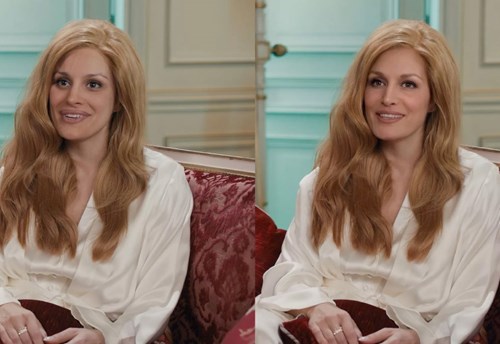

The fact that everything is filtered by what’s illusory generates alertness. In a public scene crossed by a complex network of interests, every message is received with a hint of suspicion. Faced with brands, people exert greater pressure to make everything as transparent as possible in order to be confident about what they consume. Technology company FourFront created a group of fictitious “influencers” on TikTok with stories and characters defined by scriptwriters and played by actors. Overall, the characters have millions of followers, views and interactions as they propose different activities to unlock content from the individual plots. While the public has access to the fact that these are not real people, the truth is that many people identified with the characters, thinking that they really existed, and even shared intimate confessions with them. The creation of fake influencers who share aspirational lives for profit on social networks is widespread practice. For consumers, obtaining reliable information validated by other players and alternative means becomes a fundamental task.
The discussion around what’s authentic is updated while new technological tools become massively adopted and allow people to alter the content they share with ease. Sophisticated editing programs are increasingly accessible and easy to use. The launch of ChatGPT, an AI tool that understands natural language and responds in the same manner, has brought the discussion to another level. Among the tool's multiple applications there is, for instance, the ability to write academic essays in an instant. According to Noam Chomsky, if ChatGPT is not channeled from current educational practices, it could become a means of “high-tech plagiarism” that would make it very difficult for teachers to detect possible student fraud and would threaten collective learning. Conversely, the tool could unlock an infinite universe of hybrid creativity between humans and machines, although this would imply rethinking the concept of originality. At a recent concert, David Guetta simulated an Eminem vocals with the help of two AI websites: he asked one tool to create a verse as if it were a song by the rapper within the rave music genre that is characteristic of the DJ's style, and the other AI to recreate Eminem's voice to finally obtain an original audio.

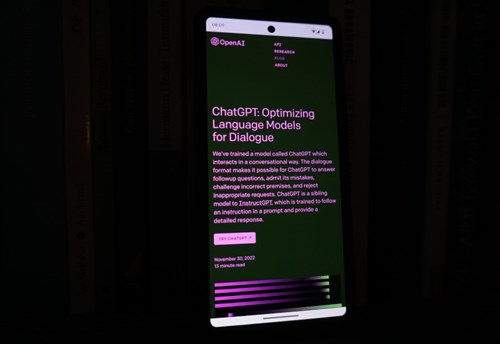
The premise holding that what's fake is worthless is an idea that changes as experiences emerge playing with the boundaries between what’s genuine and what’s a copy. The art collective MSCHF bought Andy Warhol's Fairies (1954) for $20,000, made 999 exact forgeries with the help of a robot that replicated the drawing, as well as the aging effect and other details of the paper, and mixed them up, losing the original among them. The 1,000 pieces were sold for $250 each under the idea that “definitely all the works are by MSCHF and, also, possibly by Andy Warhol” without being able to specify which was the genuine piece. Reflecting on the value of things is something that is beginning to spread with the expansion of the metaverse, an intangible and artificial universe, where works can be reproduced to infinity, liquefying the idea of tangible originality. The Currency, the first NFT collection by artist Damien Hirst, challenges the concept of value by forcing buyers to decide between owning the physical artwork or the digital token connected to it, but in no case both. The project includes 10,000 different NFTs, each associated with a piece Hirst handcrafted. The tokens are sold through a lottery system for $2,000. Collectors choose between the analog piece or its virtual version; if they choose the latter, its physical counterpart is incinerated. As of the end of 2022, around 5,000 pieces had been destroyed.
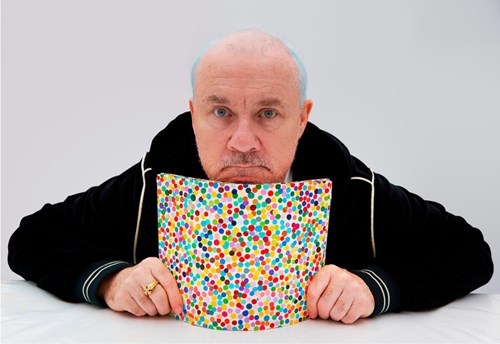

We are living in a society where everybody pretends to be something else in the hope that such a fiction will turn into reality. In the midst of this scenario of manipulations, personal identities become fragile as they fluctuate around comparison, differentiation and mimicry. A survey conducted by ParentsTogether (2021), a community of more than 2.5 parents in the US, found that the majority of adolescents claim that using beauty filters makes them feel worse about how they look in real life and that the use of these aesthetic filters is correlated with low self-esteem and a poor body image. The dispute around what's real finds one of its main battlefields in the representation individuals make of themselves and their identification with referents they find in the public sphere. In order to encourage a more genuine representation of the people of Brazil and go beyond stereotypes, the creative agency Lab 678 created its own free-use image bank for editorial purposes. Organized in categories that correspond to random moments of local daily life, for example, “doing business on a Tuesday at 12:11” or “Sunday with friends at 16:27”, the photographs reflect the diversity of bodies, skin tones, identities, gender expressions and sexualities. The project calls on content creators to stop using photos out of context and start adding authenticity. In order to fight racial bias in search engines, beauty brand Olay is sending young black women to coding camps. Currently, algorithms and AI are programmed mainly by white males. If you search for “beautiful face”, “beautiful woman”, “beautiful skin” in the US, 80% of the results will not include black women. One solution to such search results is to get more women to program to decrease racial bias in technology.

In a context that legitimizes retouched perfection and carefully curated Instagram accounts under the idea of personal branding, alternative movements emerge that propose a narrative based on spontaneity and error. However, obsession with creating appealing content –perfect or not– to be massively exhibited and obtain the approval of others is what configures a particular logic and adds an additional intention to everything that is communicated. This is true, even for those who want to appear “natural” on BeReal or “carefree” on TikTok. For some, the solution to recover genuine communication is to find refuge in digital spaces where anonymity reigns. The voice and text chat application Discord, known for creating a culture of anonymous discussion –users only use pseudonyms– has millions of young users. The group therapy app Chill Pill, aimed at those under the age of 24, is also growing in popularity, offering to create a network of friends, but where no personally identifiable information is allowed to be shared. Manipulated identities can, however, be a valid resource for finding a new way of social interaction away from the real thing. The metaverse, a medium that is essentially constructed by fluctuating between imitation of reality and fictional delirium, establishes new environments and codes for relationships and communication. Nevermet is a dating app that allows you to create fantastic avatars for interacting in virtual reality with the goal that physical attraction becomes one of several factors, rather than the primary way people connect. Users can design their avatar without human faces (they are not allowed) and, for example, take the form of a mushroom or a rabbit, to chat with their dates in fantastic settings.


The wish to break away from what’s “fake” and access what’s genuine runs through consumers’ attitudes. The dilemma lies in recognizing what makes real sense to buy, because it brings something more –a story, a purpose, an identity– and differentiating it from what is not worth choosing because it is nothing more than an advertising gimmick. Detecting scams has become a sport of the masses. However, what’s genuine is negotiable when the offer is convenient from an accessibility point of view and, above all, in times of crisis, from an affordability perspective. For example, the “ghost kitchen” model used by some home delivery services creates confusion by offering menus with world cuisines, but its production conditions are nothing like the culinary spirit they claim to offer. There are cases where the same kitchen behind closed doors supplies different restaurants with an online presence, each one of them under a different brand identity and type of cuisine: Indian, Italian, Chinese, Armenian, etc. For foodies, this may be unacceptable. Among those who do buy, it is likely that many are unaware of this lack of “authenticity”. Others, even knowing the trick, do not mind that much because the price is affordable and convenient relative to the quality of the dishes. The emergence of “ghost stores” in social media also raises questions as to the falsehood of certain proposals. Take, for instance, virtual fashion brands with enough identity and storytelling. They attract online consumers and sell them items at average prices, while in fact they are provided with fast and cheap fashion products available on YesStyle, Amazon, AliExpress or Shein.
But the thirst for knowledge is not only related to the images, messages, ideas and references to which we pay attention and influence our decisions, but also to the composition of the products we acquire for consumption. In a scenario dominated by the manipulation and opacity of information, obtaining certainty about the true source and qualities of what is consumed becomes an immense value. Lack of trust drives the wish for clean consumption and the celebration of what’s “pure”. There is a widespread belief that ingredients and materials in their raw state, that is, without any addition or process that minimally alters any of their original features, preserve the beneficial qualities of the products better. Purity is directly associated with the most rustic nature. This is a prejudice that is sometimes counterproductive, since certain treatments enhance the initial qualities of the ingredients and in others, a physical or chemical process allows the beneficial functions of the material to be released. Symrise Diana Food and SMAG Smart Agriculture developed a customized application to improve the transparency and traceability of ingredients. The agronomic activities –production modes, selection mechanism, quality assessment– of the global chain were digitized to create a digital agro-community composed of the brand’s 13 in-house agronomists and fruit and vegetable producers, in order to share data, experiences and learnings. Both the companies Diana Food supplies and end consumers can easily access the information to feel more confident.
In many countries there is a growing negative vision around different categories such as “industrial”, “processed”, “additives”, “artificial” or “chemical”, which are related to what’s anti-natural or fake. This represents a communication challenge for brands. It is important to inform to what extent the original qualities of the ingredients are altered by the processes and why this extraordinary treatment is beneficial for the final consumption of the product. In particular, in the food and beverage industry, there is a steadily increasing number of consumers who prefer minimally processed and “clean” products. More attention is paid to formulas, and unknown – unfamiliar– ingredients and those with chemical-sounding names (IFIC) are avoided. However, the concept of “clean” does not have a unique definition for the public: some identify it with “not artificial or synthetic”, others with “not highly processed” or “not transgenic”. On the other hand, messages and labels that mention organic, fresh and/or natural are positively valued, although these qualities are also relative, since in some markets they are not regulated and therefore lend themselves to confusion. A survey conducted in Germany by the German Federal Institute for Risk Assessment (BfR, 2022) to 1,015 people found that more than half of consumers (55%) hold a negative perception of food additives –such as colorants, preservatives, enhancers, emulsifiers and sweeteners– because of possible health effects, although at the same time they express a lack of knowledge about these ingredients. The preference for consuming fresh seasonal ingredients grown in nearby regions is part of the same strategy to avoid additional processes and treatments that guarantee preservation.
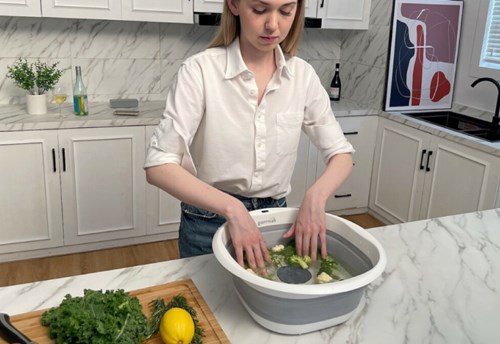
The wish to strip products of any kind of artificial contamination is pushing the design of a new range of household devices aimed at making food and beverages cleaner and safer. The aim is to eliminate undesirable tampering and achieve maximum purity. This adds a domestic activity in the kitchen and creates business opportunities for companies. The Garrnish purifier is a kitchen device that removes 90% of common pesticides and 99.9% of chlorpyrifos and dichlorvos insecticides from fresh fruits and vegetables. It uses electrolysis technology to clean ingredients without the use of additional chemicals. The idea of purifying everything around us is also gaining ground in indoor spaces. Purifying the air, the water, the sound, everything is valid to feel “clean”. This behavioral change encourages a fresh perspective on wellness and health, empowering the integration of the cosmetics and personal care industry into home environments. The Air Beautification filtration machine from Skin Authority removes 99% of chemicals and ultra-fine (0.1 micron) harmful particles from the air to create a safe habitat for the skin.
In a context where manipulating reality for both beneficial and unscrupulous purposes has become commonplace, people are suspicious of companies and their offers when making purchasing decisions. Decision-making in the marketplace will be facilitated by creating a framework of trust where there is access to honest information about the processes and tools involved in creating an offer. Successful branding strategies will be those that validate messages and propositions with independent third parties to provide greater assurance to consumers. In certain cases, the mission will be to reverse the negative perceptions associated with being artificial by clearly demonstrating that the use of certain technical resources enhances the beneficial qualities of products and services. The idea of authenticity will diversify and include both the wisdom of original nature and the new generation of solutions that use technology to create genuinely valuable experiences.
Pictures courtesy of France 3, Heni, Nevermet, Garrnish & Lab 678.
